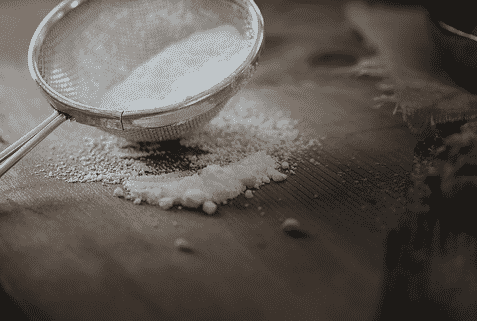Extreme tiredness, aching joints, a bloated stomach, a desperate urge to rush to the... CNZ member Elly McKenzie knows the feeling, and having lived with coeliac disease for 17 years she has worked hard to ensure her children with gluten-free, dairy-free and low-soy needs do the same – but she also understands that even the most clued-up and vigilant of us all can sometimes accidentally get ‘glutened’.
As careful as you try to be, chances are you’ll unwittingly ingest gluten at some point on your gluten-free journey. But although regularly doing so increases a person with coeliac disease’s risk of nutrient deficiencies, osteoporosis (bone weakening), impaired growth and poor calcification of the teeth (in children), developing other autoimmune diseases (such as type 1 diabetes), infertility and miscarriage, and lymphoma and gastrointestinal cancers, a one-off, accidental ‘glutening’ isn’t a long-term threat to wellness.
It’s an unfair reality that the longer you’re on a gluten-free diet, the more intense your reaction to gluten may become. You may even develop symptoms you didn’t experience prior to going gluten free. This is because it’s easier to recognise symptoms when you don’t regularly experience them, and also because your immune system becomes more reactive to gluten when it hasn’t encountered it for a while. So what do you do if it happens to you? “Don’t panic!” says Elly. Instead, she says, support your body by:
- Trying not to feel guilty or stressing out, as stress may upset your gastrointestinal system even more. Learn as much as you can from the situation, be kind to yourself and move forward.
- Drinking plenty of water.
- Using pain relief only as required and with care, checking first that the medication is gluten free.
- Getting adequate rest. The symptoms of gluten exposure aren’t restricted to the gut and may affect your entire body, so you’ll probably feel exhausted (like you would if you were fighting a virus or at other times when your immune system has been stimulated) and your sleep may also be disturbed. You may need to consider temporarily reducing your usual commitments to give yourself time to recover.
- Using heat packs and hot water bottles for relief and comfort. Wheat bags are safe to use, although caution is required if you experience contact skin reactions to wheat or gluten.
- Proceeding with caution when you’re ready to eat again, as if you were recovering from a tummy bug. Eat light, easily digestible meals. Bone broth (or simple soups) can be a good initial option.
- Considering gluten-specific digestive enzymes. When taken as directed, and soon after ingesting the gluten-containing food, they may help to ease your gut symptoms. A pharmacist or naturopath can help you with your selection; I find that Radiance’s Digest Gluten works well.
- Trying Iberogast, peppermint oil (in slow-release capsules) and/or activated charcoal. When taken as directed, some people find these products can help to relieve symptoms. Activated charcoal works by binding toxins and reducing gas. It’ll also bind to beneficial substances in the gut, such as vitamins and minerals, so shouldn’t be used on a regular basis.
- Taking a course of probiotics or consuming fermented foods (which naturally contain probiotics). Although there’s little scientific evidence to support the efficacy of probiotics, anecdotally they’ve been found to help with recovery.
- Temporarily avoiding foods that contain lactose (milk sugar). This may be of benefit to some people because lactase (the enzyme that breaks down lactose into the simpler sugar molecules that the body can absorb) is made in the cells that line the villi (in the small intestine). The villi are a key area of the body that’s damaged when a person with coeliac disease eats gluten, so lactase production may be temporarily affected.
- Using dermatologist-prescribed ointments to control dermatitis herpetiformis flare-ups. Baking soda made into a paste with a little water may be soothing if you don’t have prescription medication on hand.
- Easing the discomfort of diarrhoea by using Eco Store Nappy Balm (zinc cream) to soothe a sore bottom.
- Keeping a suitable container (with a lid) in your car or a large zip-lock bag in your handbag. This can be a life-saver if vomiting is a symptom you experience. Carrying a change of underwear may be a good idea if you experience urgent diarrhoea.
- Identifying your personal pattern of symptoms. Symptoms typically follow a predictable pattern and getting to know yours will help you to identify the source of the gluten so you can avoid it in future. Recent studies have shown that most coeliac’s symptoms begin two to four hours after gluten exposure.
- Being patient. Symptoms such as stomach pain, joint pain, fatigue and brain fog may take several weeks to resolve. Similarly, anxiety, depression and irritability can be symptoms of gluten exposure, so it can take a while before you feel like yourself again.
- Asking for help. If accidental (or non-accidental) gluten ingestion becomes a regular occurrence for you, a dietician or other professional such as The Insides Guide can help you to identify where gluten may be sneaking into your diet and set you back on the path to living well gluten free.
For practical, accurate insider’s advice about all things gluten, visit Elly McKenzie at The Insides Guide: www.theinsidesguide.com.

